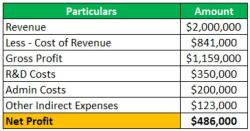How are Treasury issues debt?
The U.S. Department of the Treasury issues debt through a well-defined process to finance the government's operations and obligations. The issuance of debt by the U.S. government is a significant component of fiscal policy. Here is an overview of the process:
1. Budgetary Process:
- The debt issuance process begins with the federal budget, which is prepared by the President's Office of Management and Budget (OMB) and submitted to Congress. The budget outlines the government's expected revenues and expenditures for the upcoming fiscal year. If there is a projected budget deficit (where expenditures exceed revenues), the government will need to borrow to cover the shortfall.
2. Congressional Approval:
- Congress must authorize the Treasury to issue debt through the passage of legislation. This legislation sets the debt ceiling, which is the maximum amount of debt the government is allowed to issue. When the government approaches the debt ceiling, Congress must raise it to prevent a default on government obligations.
3. U.S. Department of the Treasury:
- Once Congress approves the debt issuance, the U.S. Department of the Treasury is responsible for managing the process. The Treasury must determine the type of debt instruments to issue (e.g., Treasury bills, notes, bonds) and the specific terms, including the maturity date and interest rate.
4. Auction Process:
- The primary method for issuing U.S. government debt is through auctions. The Treasury conducts auctions for various types of securities, with the most common being Treasury bills, Treasury notes, and Treasury bonds. These auctions are typically open to authorized financial institutions and investors.
5. Bidders and Competitive vs. Non-Competitive Bids:
- Potential buyers submit bids to purchase Treasury securities. There are two types of bids:
- Competitive Bids: These bids specify the desired yield or interest rate that the bidder is willing to accept. Competitive bidders compete based on the yield they offer, and the securities are awarded to the highest bidders until the government's issuance amount is reached.
- Non-Competitive Bids: Non-competitive bidders accept the yield determined by the competitive bidding process. They are guaranteed to receive the securities at the yield determined through competitive bidding.
6. Auction Results:
- After the auction, the Treasury announces the results, including the accepted bids and the yield or interest rate for the securities. The securities are awarded to the successful bidders, starting with the lowest yield bids.
7. Settlement and Payment:
- The settlement date is when the successful bidders must make payment for the securities they have won in the auction. The U.S. Treasury then issues the securities to the buyers.
8. Interest Payments and Principal Repayment:
- The Treasury pays interest on its debt to the holders of the securities at specified intervals (e.g., semiannually for Treasury bonds). When the securities mature, the Treasury repays the principal amount to the bondholders.
The U.S. Treasury continuously monitors its financial operations and debt management to ensure that the government can meet its obligations. The debt issuance process plays a crucial role in funding government activities, supporting various programs, and maintaining economic stability. It is essential to manage the debt wisely to maintain the government's creditworthiness and prevent financial crises.
Treasury Debt Issuance: How the Government Raises Funds
The United States Treasury Department raises funds by issuing Treasury securities, which are essentially loans that investors make to the government. Treasury securities are considered to be very safe investments, as they are backed by the full faith and credit of the United States government.
There are four main types of Treasury securities:
- Treasury bills: Treasury bills are short-term securities that mature in less than one year.
- Treasury notes: Treasury notes are medium-term securities that mature in one to ten years.
- Treasury bonds: Treasury bonds are long-term securities that mature in ten years or more.
- Treasury Inflation-Protected Securities (TIPS): TIPS are Treasury bonds that protect against inflation, as their principal value is adjusted for inflation.
The Treasury Department issues Treasury securities through regular auctions. Investors can purchase Treasury securities through primary dealers, which are financial institutions that have a special relationship with the Treasury Department.
The Mechanics of Treasury Debt Issuance
The process of Treasury debt issuance begins with the Treasury Department determining how much money it needs to raise. Once the Treasury Department knows how much money it needs to raise, it sets a schedule for auctions.
At each auction, the Treasury Department offers a certain amount of Treasury securities for sale. Investors submit bids for the securities, and the Treasury Department awards the securities to the investors who submit the highest bids.
The Treasury Department sells Treasury securities at a discount to their face value. This means that investors pay less than the face value of the securities when they purchase them, and they receive the face value of the securities when they mature.
Impact of Treasury Debt Issuance on Financial Markets
Treasury debt issuance has a significant impact on financial markets. When the Treasury Department issues new Treasury securities, it increases the supply of bonds in the market. This can lead to a decrease in bond prices, as investors will only be willing to pay lower prices for bonds if the supply of bonds increases.
Treasury debt issuance also impacts interest rates. When the Treasury Department issues new Treasury securities, it must pay interest on those securities. This increases the demand for loanable funds, which can lead to an increase in interest rates.
The impact of Treasury debt issuance on financial markets can vary depending on a number of factors, such as the size of the issuance, the economic conditions, and investor sentiment. However, Treasury debt issuance is always an important event that investors monitor closely.
Overall, Treasury debt issuance is an important way for the government to raise funds to finance its operations. Treasury securities are considered to be very safe investments, and they play a vital role in the financial markets.













